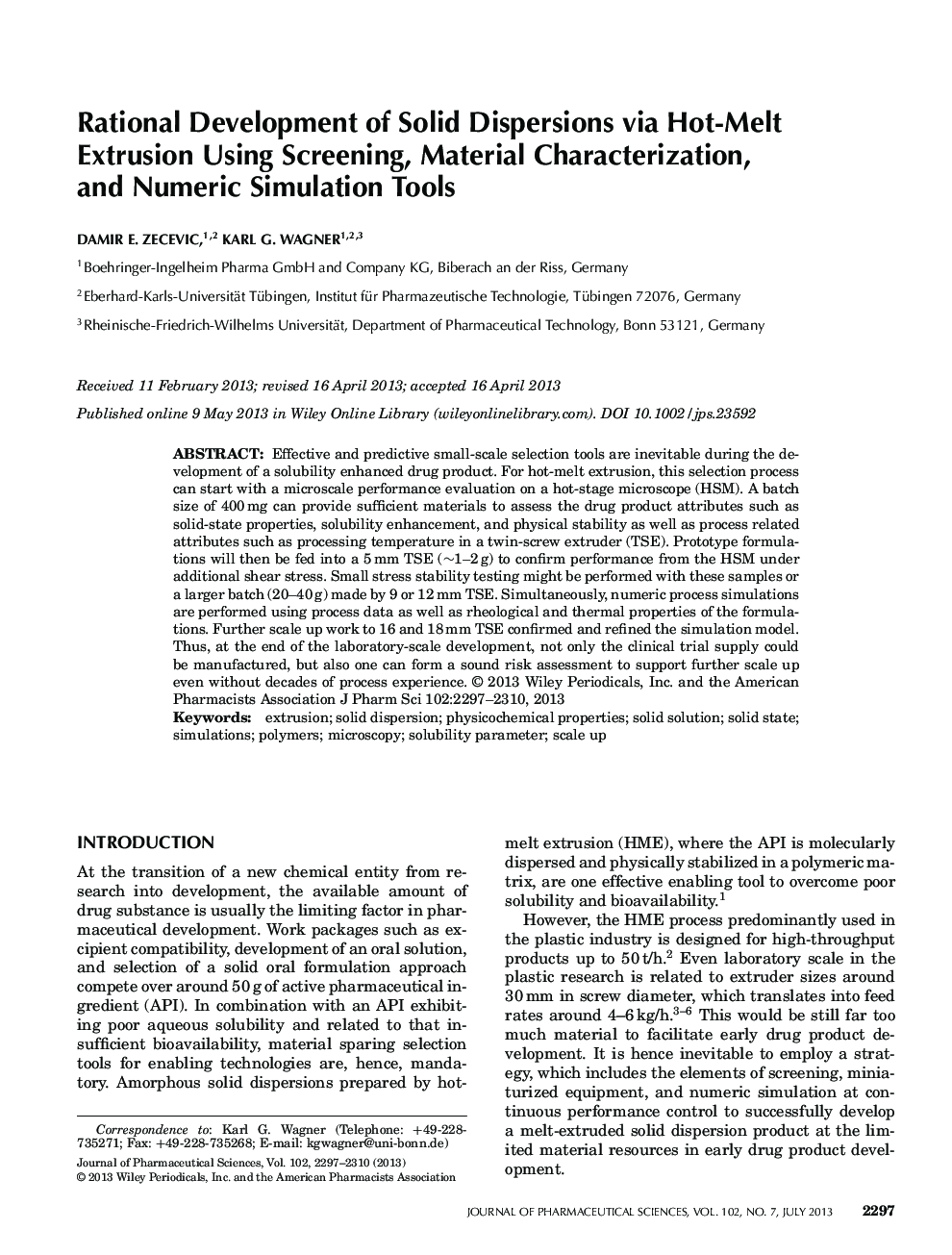| Article ID | Journal | Published Year | Pages | File Type |
|---|---|---|---|---|
| 2484756 | Journal of Pharmaceutical Sciences | 2013 | 14 Pages |
Abstract
Effective and predictive small-scale selection tools are inevitable during the development of a solubility enhanced drug product. For hot-melt extrusion, this selection process can start with a microscale performance evaluation on a hot-stage microscope (HSM). A batch size of 400Â mg can provide sufficient materials to assess the drug product attributes such as solid-state properties, solubility enhancement, and physical stability as well as process related attributes such as processing temperature in a twin-screw extruder (TSE). Prototype formulations will then be fed into a 5Â mm TSE (â¼1-2Â g) to confirm performance from the HSM under additional shear stress. Small stress stability testing might be performed with these samples or a larger batch (20-40Â g) made by 9 or 12Â mm TSE. Simultaneously, numeric process simulations are performed using process data as well as rheological and thermal properties of the formulations. Further scale up work to 16 and 18Â mm TSE confirmed and refined the simulation model. Thus, at the end of the laboratory-scale development, not only the clinical trial supply could be manufactured, but also one can form a sound risk assessment to support further scale up even without decades of process experience. © 2013 Wiley Periodicals, Inc. and the American Pharmacists Association J Pharm Sci 102:2297-2310, 2013
Keywords
Related Topics
Health Sciences
Pharmacology, Toxicology and Pharmaceutical Science
Drug Discovery
Authors
Damir E. Zecevic, Karl G. Wagner,
